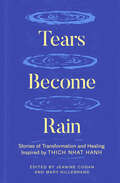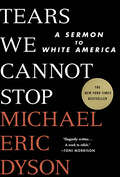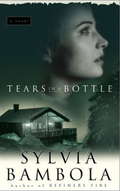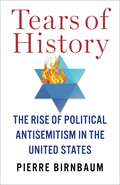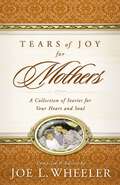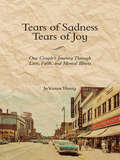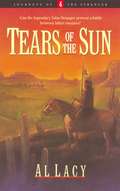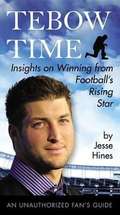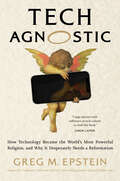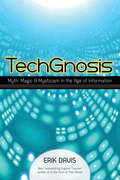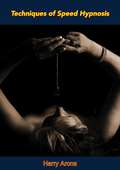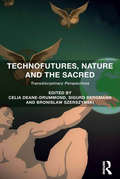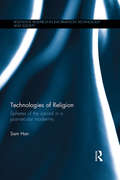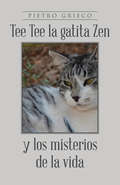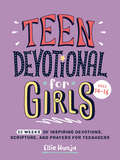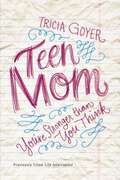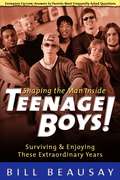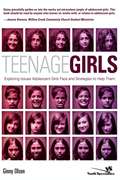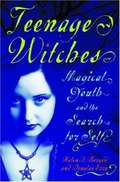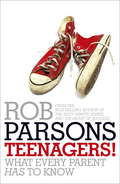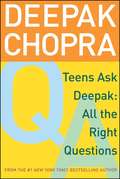- Table View
- List View
Tearoom in a Tempest (Tearoom Mysteries #17)
by Leslie GouldApril showers bring mystery when a stranger leaves Jan and Elaine a package containing a valuable first edition of Henry Wadsworth Longfellow's Evangeline. The cousins discover that it once belonged to their late grandmother, and a cryptic note in the book uncovers an old family feud with implications in the present. The cousins take the book to Bristol Payson to learn its value, but amid torrential rains that cause the Bookworm to flood, the book is stolen. The cousins set out to recover it, assisted by Elaine's visiting daughter, Sasha, but Elaine is chagrined when Sasha begins spending time with one of their prime suspects. Elaine and Jan visit Lancaster's Department of Public Works to be sure their drainage system is adequate to prevent flooding. There, they find an ornate chandelier, about to be discarded, and install it at Tea for Two. But when the chandelier explodes, their investigation of its origins--and how it got to the public works building--takes them to an abandoned old mansion with a puzzling past. Mix together one stately Victorian home, a charming lakeside town in Maine, and two adventurous cousins with a passion for tea and hospitality. Add a large scoop of intriguing mystery and sprinkle generously with faith, family, and friends, and you have the recipe for Tearoom Mysteries.
Tears Become Rain: Stories of Transformation and Healing Inspired by Thich Nhat Hanh
by John Bell Kaira Jewel Lingo Celia Landman32 mindfulness practitioners around the world reflect on encountering the extraordinary teachings of Zen master Thich Nhat Hanh, who passed away in January 2022, exploring themes of coming home to ourselves, healing from grief and loss, facing fear, and building community and belonging.Some moments change our lives. We experience wonder and relief when we realize we can be okay, just as we are. How do we then integrate these transformative moments into our daily life? Tears Become Rain is a collection of such stories, with one common inspiration: the teachings of mindfulness and compassion offered by the most influential meditation teacher of the past century, the Buddhist monk and peace activist Thich Nhat Hanh, who was nominated for the Nobel Peace Prize by Dr. Martin Luther King.The stories encapsulate the benefits of mindfulness practice through the experiences of ordinary people from 16 countries around the world. Some of the contributors were direct students of Thich Nhat Hanh for decades and are meditation teachers in their own right, while others are relatively new on the path.After her mother's death, Canadian author Vickie MacArthur writes poignantly of discovering a source of peace within herself at Thich Nhat Hanh's Plum Village monastery in France. Jamaican American English professor Camille Goodison uncovers the racism of academia and finds freedom from her toxic workplace by practicing the teachings of love and liberation as taught to her by Thich Nhat Hanh. Vietnamese doctor Huy Minh Tran shares how mindfulness helped him transform his traumatic past as a refugee so that he no longer suffers from nightmares. Norwegian Eevi Beck meditates on the teacher-student relationship and how Thich Nhat Hanh supported her marriage and then loss of her husband. For many, battling sickness, old age, and death—the death of loved ones and one's own—brings up overwhelming emotions of grief, anger, and despair but with the wisdom of Zen practice, Tears Become Rain shows again and again how people are able to find refuge from the storm in their lives and open their hearts to joy. Through sharing their stories, Tears Become Rain is both a celebration of Thich Nhat Hanh and a testament to his lasting impact on the lives of people from many walks of life.
Tears We Cannot Stop: A Sermon to White America
by Michael Eric Dyson“A hard-hitting sermon on the racial divide, directed specifically to a white congregation.” —Kirkus Reviews, starred reviewA New York Times, Los Angeles Times, Washington Post, and Boston Globe BestsellerAs the country grapples with racial division at a level not seen since the 1960s, Michael Eric Dyson’s voice is heard above the rest. In Tears We Cannot Stop, a provocative and deeply personal call or change, Dyson argues that if we are to make real racial progress, we must face difficult truths, including being honest about how Black grievance has been ignored, dismissed, and discounted. In the tradition of James Baldwin’s The Fire Next Time—short, emotional, literary, powerful—this is the book that all Americans who care about the current and long-burning crisis in race relations need to read.Praise for Tears We Cannot StopNamed a Best/Most Anticipated Book of 2017 by: The Washington Post • Bustle • Men’s Journal • The Chicago Reader • StarTribune • Blavity• The Guardian • NBC New York’s Bill’s Books • Kirkus Reviews • Essence“Elegantly written and powerful in several areas: moving personal recollections; profound cultural analysis; and guidance for moral redemption. A work to relish.” —Toni Morrison“Here’s a sermon that’s as fierce as it is lucid . . . If you’re black, you’ll feel a spark of recognition in every paragraph. If you’re white, Dyson tells you what you need to know—what this white man needed to know, at least. This is a major achievement. I read it and said amen.” —Stephen King“One of the most frank and searing discussions on race . . . a deeply serious, urgent book, which should take its place in the tradition of Baldwin’s The Fire Next Time and King’s Why We Can’t Wait.” —The New York Times Book Review
Tears in a Bottle
by Sylvia BambolaBecky Taylor, a young woman burdened by great expectations, is lying on a cold recovery table in an abortion clinic when she hears a man's voice, then gunshots. She holds her breath and lies perfectly still behind the curtain. When the gunman is finished, Becky is the only one left alive in the clinic. This act brings together two strangers who both seek answers to life's most wrenching questions, mainly: Are God's love and mercy big enough for every sin? The answer transforms multiple lives.
Tears of History: The Rise of Political Antisemitism in the United States (European Perspectives: A Series in Social Thought and Cultural Criticism)
by Pierre BirnbaumFor many Jews, for more than a century, the United States has seemed to be a safe haven. There has been antisemitic prejudice, but nothing on the scale of the discrimination, persecution, pogroms, and genocide witnessed in Europe. White American ethnic violence has assailed many targets, but Jews have rarely been among them. Observing what he took to be an American exception, the influential historian Salo Baron challenged the “lachrymose conception” of Jewish history as an unending flow of oppressions, and many have followed him in seeing American Jews as sheltered from violence. But in recent years a spate of antisemitic attacks has cast doubt on this rosy view.The eminent French scholar Pierre Birnbaum offers a timely reconsideration of the tear-stained pages of Jewish history and the persistence of antisemitism. He explores the promise of American tolerance as well as the darkest moments of American intolerance, such as the 1913 lynching of Leo Frank. Birnbaum engages deeply with Baron’s views about Jewish history and tracks the echoes of European antisemitic violence in American culture. He argues that a new and insidious form of antisemitic ideology has arisen, one that sees the state as an instrument of Jewish control—and threatens further bloodshed. Thoughtful and eloquent, Tears of History is an important reflection on the roots of antisemitic violence and hatred.
Tears of Joy for Mothers: A Collection of Stories for Your Heart and Soul
by Joe L. WheelerAmidst the hectic pace of parenting, marriage and life, Tears of Joy for Mothers helps mothers escape for short periods of time to let their minds and emotions be swept away by characters and stories they can relate to-deep, heart-felt stories that will move them to tears of joy and appreciation for what God can do in and with their lives. These heart-tugging stories, gathered by America's most beloved story anthologizer, affirm the ultimate value in motherhood and help mothers everywhere grow in their appreciation for life and the children they love. A great gift for Mother's Day or all year round.
Tears of Sadness, Tears of Joy: One Couple’s Journey Through Love, Faith, and Mental Illness
by Jo Vamos HonigIn the summer of 1956, when Jo met charismatic young preacher Bill Vamos at a Vacation Bible School conference, neither could possibly have predicted the decades-long journey they were about to embark on together. It would bolster-and test-their faith in ways they never could have anticipated.
Tears of the Silenced: An Amish True Crime Memoir of Childhood Sexual Abuse, Brutal Betrayal, and Ultimate Survival
by Misty GriffinA &“stunningly written memoir&” that takes you on the journey of a child abuse and sexual assault survivor turned activist. Photo Gallery included (Medium). A #1 Bestseller in Cults & Demonism and Parenting & Relationships When Misty Griffin was six years old, her family started to live and dress like the Amish. Misty and her sister were kept as slaves on a mountain ranch and subjected to almost complete isolation, sexual abuse, and extreme physical violence. Their stepfather kept a loaded rifle by the door to make sure the young girls were too terrified to try to escape. No rescue would ever come since the few people who knew they existed did not care. When Misty reached her teens, her parents feared she and her sister would escape and took them to an Amish community. Devastated to again find herself in a world of fear, cruelty, and abuse, Misty was sexually assaulted by the bishop. After she escaped and reported the bishop, she found herself alone in a modern world with only a second-grade education and no ID or social security card. Misty has a message for abuse survivors: &“Please be encouraged, the cycle of abuse can be broken. This is my story of survival and moving past the abuse to embrace my dreams.&” In June 2019 Misty graduated nursing school. She continues to work to raise awareness about child abuse and sexual assault. &“A testament to the courage, fortitude and power of one young woman to take back her life.&”—Becca Anderson, author of The Book of Awesome Women
Tears of the Sun (Journeys of the Stranger #4)
by Al LacyBook Four of the Journeys of the Stranger series finds the legendary John Stranger summoned to Apache Junction, Arizona, where a hard-fought land dispute between the local Apache and Zuni Indians has led to the wedding-day kidnapping of the son of Arizona's governor. As terms for his return, the warriors demand weapons that can only escalate the fighting between the tribes, as well as the white men who come to the area looking for gold or-as it's known to the Indians-"Tears of the Sun." Readers will experience the drama and adventure as John Stranger fights to rescue Ben Wheeler and shares the tears of a very different "Son" in a dramatic new installment of the Journeys of the Stranger.From the Trade Paperback edition.
Tebow Time
by Jesse HinesTim Tebow is a rising star of the New York Jets, a Heisman Trophy winner, and “America’s Most Popular Athlete” (ESPN). His energetic and unorthodox style of play, his penchant for producing dramatic comeback victories, his unapologetic espousal of the Christian faith, and his gracious demeanor make him a fan favorite. Tebow Time: Insights on Winning from Football’s Rising Star presents quotations from Tim Tebow on varied topics and couples them with an “In Context” analysis from the book’s editor. These quotations are culled from numerous interviews, press conferences, and profile pieces from various points in Tebow’s career, and give fans and critics a deeper insight into who he is and what drives him to excel. With an in-depth introductory essay examining Tebow as an individual, a football player, and a cultural phenomenon, this book will delight fans of this rare and humble football icon. Among the topics Tebow discusses are: Anxiety; Being a Role Model; Belief; Biblical Role Models; Compassion; Controlling Emotions; Dealing with Critics; Decision-Making; Enjoying Life; Eye Black Scriptures; Faith; First Impressions; Fitness; God’s Sovereignty; Handling Fame; Hard Work; How to Improve America; Humility; Integrity; Learning from Failure; Living by Faith; Living with Passion; Most Important Thing in Life; Never Giving Up; Nutrition; Orphans; Preaching; Pride; Pushing Yourself to the Limit; Self-Discipline; Sexual Purity; Sharing the Credit; Spreading the Gospel; Staying Grounded; Supporting Teammates; “Tebowing”; Trash Talking; Victory; Visiting Suffering Fans and much more. “The game doesn’t really matter. I mean, I’ll give 100 percent of my heart to win it, but in the end, the thing I most want to do is not win championships or make a lot of money, it’s to invest in people’s lives, to make a difference. ” —Tim Tebow .
Tech Agnostic: How Technology Became the World's Most Powerful Religion, and Why It Desperately Needs a Reformation
by Greg EpsteinAn urgently needed exploration of global technology worship, and a measured case for skepticism and agnosticism as a way of life, from the New York Times–bestselling author of Good without God.Today&’s technology has overtaken religion as the chief influence on twenty-first century life and community. In Tech Agnostic, Harvard and MIT&’s influential humanist chaplain Greg Epstein explores what it means to be a critical thinker with respect to this new faith. Encouraging readers to reassert their common humanity beyond the seductive sheen of &“tech,&” this book argues for tech agnosticism—not worship—as a way of life. Without suggesting we return to a mythical pre-tech past, Epstein shows why we must maintain a freethinking critical perspective toward innovation until it proves itself worthy of our faith or not.Epstein asks probing questions that center humanity at the heart of engineering: Who profits from an uncritical faith in technology? How can we remedy technology&’s problems while retaining its benefits? Showing how unbelief has always served humanity, Epstein revisits the historical apostates, skeptics, mystics, Cassandras, heretics, and whistleblowers who embody the tech reformation we desperately need. He argues that we must learn how to collectively demand that technology serve our pursuit of human lives that are deeply worth living.In our tumultuous era of religious extremism and rampant capitalism, Tech Agnostic offers a new path forward, where we maintain enough critical distance to remember that all that glitters is not gold—nor is it God.
TechGnosis
by Erik Davis Eugene ThackerHow does our fascination with technology intersect with the religious imagination? In TechGnosis--a cult classic now updated and reissued with a new afterword--Erik Davis argues that while the realms of the digital and the spiritual may seem worlds apart, esoteric and religious impulses have in fact always permeated (and sometimes inspired) technological communication. Davis uncovers startling connections between such seemingly disparate topics as electricity and alchemy; online roleplaying games and religious and occult practices; virtual reality and gnostic mythology; programming languages and Kabbalah. The final chapters address the apocalyptic dreams that haunt technology, providing vital historical context as well as new ways to think about a future defined by the mutant intermingling of mind and machine, nightmare and fantasy.From the Trade Paperback edition.ology; programming languages and channeled texts. The final chapters address both apocalyptic and utopian dreams of the future of technology, providing historical context as well as new models for how to think and feel our way through an amazing, confusing, and disturbing time. This new edition features a foreword by Eugene Thacker as well as a new afterword reflecting on surveillance; the current tech bubble; the growth of superheroes, horror, and other "uncanny cultures" online; the growing backlash against technology; and the need to revitalize the cosmic imagination.ContentsIntroduction: crossed wires I imagining technologies II the alchemical fire III the gnostic infonaut IV techgnosis, american-style V the spiritual cyborg VI a most enchanting machine VII cyberspace: the virtual craft VIII the alien call IX datapocalypse X third mind from the sun XI the path is a network Afterword: beyond the boomFrom the Trade Paperback edition.
Techniques of Speed Hypnosis
by Harry AronsHow to hypnotize with a snap of the fingers...at a word of command...at a signal...by telephone—quick-as-a-flash! A photo-illustrated expose of the tried-and-tested-techniques of the famous stage hypnotists, doctors, dentists and psychologists for the rapid and instantaneous induction of hypnosis.
Technofutures, Nature and the Sacred: Transdisciplinary Perspectives
by Celia Deane-Drummond Sigurd Bergmann Bronislaw SzerszynskiThe capacity of human beings to invent, construct and use technical artifacts is a hugely consequential factor in the evolution of society, and in the entangled relations between humans, other creatures and their natural environments. Moving from a critical consideration of theories, to narratives about technology, and then to particular and specific practices, Technofutures, Nature and the Sacred seeks to arrive at a genuinely transdisciplinary perspective focusing attention on the intersection between technology, religion and society and using insights from the environmental humanities. It works from both theoretical and practical contexts by using newly emerging case studies, including geo-engineering and soil carbon technologies, and breaks open new ground by engaging theological, scientific, philosophical and cultural aspects of the technology/religion/nature nexus. Encouraging us to reflect on the significance and place of religious beliefs in dealing with new technologies, and engaging critical theory common in sociological, political and literary discourses, the authors explore the implicit religious claims embedded in technology.
Technologies of Religion: Spheres of the Sacred in a Post-secular Modernity (Routledge Research in Information Technology and Society)
by Sam HanBringing together empirical cultural and media studies of religion and critical social theory, Technologies of Religion: Spheres of the sacred in a post-secular modernity investigates powerful entanglement of religion and new media technologies taking place today, taking stock of the repercussions of digital technology and culture on various aspects of religious life and contemporary culture more broadly. Making the argument that religion and new media technologies come together to create "spheres"—environments produced by an architecture of digital technologies of all sorts, from projection screens to social networking sites, the book suggests that prior social scientific conceptions of religious worship, participation, community and membership are being recast. Using the case of the strain of American Christianity called "multi-site," an emergent and growing church-model that has begun to win favor largely among Protestants in the last decade, the book details and examines the way in which this new mode of religiosity bridges the realms of the technological and the physical. Lastly, the book situates and contextualizes these developments within the larger theoretical concerns regarding the place of religion in contemporary capitalism. Technologies of Religion: Spheres of the sacred in a post-secular modernity offers an important contribution to the study of religion, media, technology and culture in a post-secular world.
Tee Tee la gatita Zen y los misterios de la vida
by Pietro GriecoLeer este libro es adentrarse al misterio milenario de vivir con un gato zen y suave ahora, y la eterna Esfinge mirando al futuro. <P><P>Cómo una persona, de querer aniquilar a todos los gatos, pasa a establecer una relación íntima y única con un animal, que se convierte en su maestro Zen. Con él aprende a escuchar y entender un nuevo lenguaje. <P>Logra experiencias nunca pensadas, excepcionales, hermosas, de un amor casi místico.
Teen Devotional for Girls: 52 Weeks of Inspiring Devotions, Scripture, and Prayers for Teenagers
by Ellie HunjaDiscover a year of inspiration and faith with Teen Devotional for Girls—your guide to navigating the unique challenges of your teen years with God&’s wisdom and love.This 52-week devotional offers relatable and relevant insights to help you grow in your faith and understand God&’s plan for your life. Each week, you&’ll find inspiring devotions, scripture, and prayers that address the real issues you face, from identity and self-esteem to relationships and mental health.Teen Devotional for Girls features:Weekly devotions: Dive into 52 weeks of thought-provoking devotions that speak directly to your heart and experiences.Scripture and prayers: Connect with God through carefully selected Bible verses and heartfelt prayers that encourage and uplift.Relevant topics: Explore important themes like faith, body image, purity, and social media, all tailored to your unique journey as a teen girl.Personal reflections: Engage with reflective questions and activities that help you apply God's truths to your daily life.Supportive Guidance: Receive wisdom and encouragement from someone who understands the struggles and joys of being a teenager.Whether you&’re new to your faith or looking to deepen your relationship with Jesus, this devotional is here to support you every step of the way. Embrace the journey and discover the incredible love and purpose God has for you.
Teen Mom: You’re Stronger Than You Think
by Tricia GoyerBeing a mom is hard. Being a young mom has unique challenges. From a teen mom herself, Teen Mom speaks to your heart, sharing insight, encouragement, and practical advice to help you create a better life for yourself and your child. Everything changes the day you discover you're going to be a mom. It's not just yourself that you think about--you have a child to care for, too. While you wouldn't trade your child for the world, some days are just hard. Baby-daddy drama, dealing with your parents, and worries about school, work, and your future slam you. Your friends can't relate to your little family, and you wonder if God has turned His back on you, too. Tricia Goyer understands. A mom at age 17, Tricia remembers what it felt like to carry the weight of the world on your shoulders, and she's here to help you through it too. In this book, she pours out her heart and shares practical advice on:Making decisions about work and schoolDealing with changing relationships with friendsFinding support as a single momRelating to the baby daddyHandling hard days. . . and more! You are the great mom your child deserves! And you are stronger than you think. This book was previously titled Life Interrupted.
Teenage Boys: Surviving and Enjoying These Extraordinary Years
by Bill BeausayIt's Time to Show Up for Your Son in a Big Way. A teenage boy's world is a dynamic, unpredictable place. That's why stringent parenting "techniques" don't always bring about the results we expect. Though we know there's a lot riding on our ability to wisely parent teenage sons, it's hard to know the best way to proceed-and parents are often overwhelmed by the challenge. But now, in this fun and down-to-earth guide, Bill Beausay offers six fresh principles that can help you overcome your fears and powerfully shape the man inside your teenage boy. BRING OUT THE BEST IN YOUR TEENAGE SON. You know that you need to be involved in your son's life. But just being there physically isn't enough. Parents who enjoy the most success in raising teen boys are present in dramatic, colorful, in-your-face ways. Teenage Boys! Will help you discover how you can develop a clear, do-able plan that will significantly impact your teen's life-and your own. NOW WITH ANSWERS TO THE MOST FREQUENTLY ASKEDQUESTIONS ABOUT PARENTING TEEN BOYS.EXPANDED TO ADDRESS THE ISSUES THAT MATTER MOST TO TEENAGE BOYS AND THEIR PARENTS. INCLUDES ADVICE FOR TWO-PARENT FAMILIES, SINGLE PARENTS, GRANDPARENTS, AND STEPPARENTS. From the Trade Paperback edition.
Teenage Girls: Exploring Issues Adolescent Girls Face and Strategies to Help Them
by Ginny OlsonGirls are more than just sugar and spice. We’ve all figured that out. What we haven’t figured out completely is how they’re wired, why they do the things they do, how the world around them affects their choices and opinions, and what that means for youth ministry—until now. In Teenage Girls, you’ll find advice from counselors and veteran youth workers, along with helpful suggestions on how to minister to teenage girls. Each chapter includes discussion questions to help you and other youth workers process the issues your own students face and learn how you can help them and mentor them through this tumultuous time. In addition to the traditional issues people commonly associate with girls, such as eating disorders, self-image issues, and depression, author Ginny Olson will guide you through some of the new issues on the rise in girls’ lives. You’ll understand more about issues related to: Family • Addiction • Emotional well-being • Mental health • Physical welfare • Sexuality • Spirituality • Relationships
Teenage Guys: Exploring Issues Adolescent Guys Face and Strategies to Help Them
by Steven GeraliYouth workers need to fully understand the inner workings and development of adolescents in order to really meet their needs. In Teenage Guys, Dr. Steve Gerali presents the stages of development that adolescent guys go through, providing stories from his own experiences in ministry and counseling as well as practical research findings to equip youth workers (both male and female) to more effectively minister to teenage guys. With advice from counselors and veteran youth workers, you’ll find helpful suggestions on how to minister to teenage guys and their families. Each chapter includes discussion questions to help you and other youth workers process the issues your own students face and learn how you can help them and mentor them through this tumultuous time. In addition to concepts like mentoring and rites of passage, Dr. Gerali also walks readers through the seven areas of development young guys go through. You’ll understand more about: • Cognitive development • Identity formation • Social development • Emotional development • Physiological development • Sexological maturation • Faith formation
Teenage Witches: Magical Youth and the Search for the Self
by Helen A. Berger Douglas EzzyA popular new image of Witches has arisen in recent years, due largely to movies like The Craft, Practical Magic, and Simply Irresistible and television shows such as Buffy the Vampire Slayer, Sabrina the Teenage Witch, and Charmed. Here, young sexy Witches use magic and Witchcraft to gain control over their lives and fight evil. Then there is the depiction in the Harry Potter books: Witchcraft is a gift that unenlightened Muggles (everyday people) lack. In both types of portrayals, being a Witch is akin to being a superhero. At the other end of the spectrum, wary adults assume that Witches engage in evil practices that are misguided at best and dangerous at worst. Yet, as Helen A. Berger and Douglas Ezzy show in this in-depth look into the lives of teenage Witches, the reality of their practices, beliefs, values, and motivations is very different from the sensational depictions we see in popular culture. Drawing on extensive research across three countries--the United States, England, and Australia--and interviews with young people from diverse backgrounds, what they find are highly spiritual and self-reflective young men and women attempting to make sense of a postmodern world via a religion that celebrates the earth and emphasizes self-development. The authors trace the development of Neo-Paganism (an umbrella term used to distinguish earth-based religions from the pagan religions of ancient cultures) from its start in England during the 1940s, through its growing popularity in the decades that followed, up through its contemporary presence on the Internet. Though dispersed and disorganized, Neo-Pagan communities, virtual and real, are shown to be an important part of religious identity particularly for those seeking affirmation during the difficult years between childhood and adulthood.
Teenagers Are People Too
by Joyce MeyerThe pressures of growing up don't have to drag you down and keep you from succeeding in life. In this book, Joyce Meyer will guide you smoothly through the often-overwhelming relationships and challenges you face as a teen today.
Teenagers!: What Every Parent Has to Know
by Rob ParsonsRob Parsons explains how to cope with this often disruptive period in a family's life and how to continue feeling close to your teenagers as they grow up and become increasingly independent. He gives clear and easy to follow advice making sure that you will not feel on your own and you will be able to make the most of your precious time with your children.'Insightful and practical. It will help every parent navigate those turbulent teenage years.' - David Lumsdon, Educational Psychology Academic and Professional Tutor, University of Newcastle-upon-Tyne 'This incredible book will save not just our relationships with our children, but our sanity. And the really lucky ones will discover it before their kids are teenagers.' - Parentalk 'It was as if somebody turned on a light. This book whispered to me, 'You're not the worst mother on the face of the earth. This stuff with your teenager is normal.' - Jennie, mother of three teenagers
Teens Ask Deepak
by Deepak Chopra Damien Barchowsky"Adults squirm when the big questions come up, especially the big spiritual ones. They don't want their kids to worry, so they give answers that all say one thing: 'Don't worry. It's all okay.' "And yet the big questions still keep coming up. At every age we all need to know what life is really all about. Not just on the surface, but deep down. "Teenagers are no exception. They deserve a spiritual life all their own. One that offers the kind of comfort we hope to give our children, but is different at the same time. More full of ideas. More mature. More fitting for the whole wide future that lies ahead. "That's what I've tried to do in this book, as fully and as honestly as possible." -- Deepak Chopra

